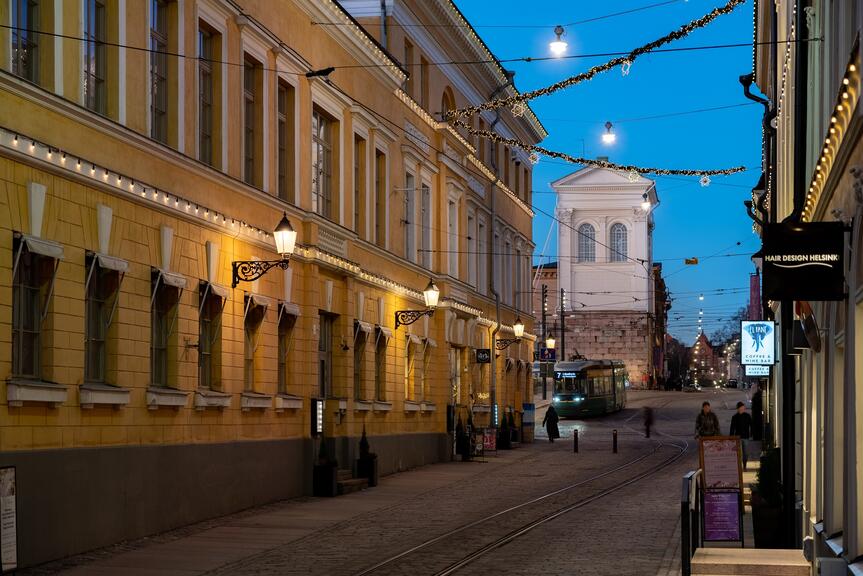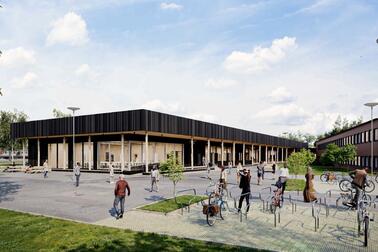
The Senate Square is one of the most valuable urban spaces in Finland and a popular site for tourists to take pictures. It plays a significant role in national history, and three major institutions meet around the square: the state, the church and the university. In addition, the buildings around the Senate Square form a uniform Empire design entity. The square is also home to the oldest building in the city centre, Sederholm House, which was completed in 1757.
The renovation of the Senate Square lighting system was a long and extensive project, as the planning and implementation area covers the entire square and its surrounding area. Dating back to the 1980s, the area’s previous lighting system no longer served modern needs and was in a poor condition.
It was suspected that implementing the lighting for different parts of the area as separate projects carried out by different contractors would lead to a chaotic outcome, so the lighting projects in the area were combined. The preparation of the lighting design for the Senate Square in cooperation with the various parties of the City of Helsinki, the managers and users of properties along the square and the Finnish Heritage Agency was started in 2013. The general design for the lighting system was completed in 2014 and more detailed design in 2017. The new lighting was ordered by the City of Helsinki, the lighting design was carried out by VALOA Design rhs Ltd and the electrical design by Sitowise Group Plc.
The lighting looks its best at twilight
The new lighting is at its most impressive in the dark hours of the evening and night. The new lighting makes the night-time city view of the square a balanced and recognisable entity. In addition to street and square lighting, the new lighting of the Senate Square includes the façade lighting of the surrounding buildings. In addition, the wall-lantern lighting method of the properties on Katariinankatu and Sofiankatu and on the side of Torikorttelit and Aleksanterinkatu has been adapted to its historical context with modern technology.
The lighting has been implemented using modern and energy-efficient LED luminaires. In addition to new lighting poles, the Senate Square’s new ambient lighting system also includes lights attached to the buildings’ façades, which can be easily controlled for different light situations. The lighting can be easily varied for both every day and festive lighting at different intensities. In a normal situation, the lighting of the square and the façades is used at about half power, which is good enough to illuminate the area, but the power can be increased if required.
The plan combines contemporary and classical
The City of Helsinki, in cooperation with the Finnish Association of Architects (SAFA) and Ornamo Art and Design Finland, held an open design competition for the design of the Senate Square lighting poles in 2018. The winner of the competition was a design by Futudesign Ltd. It was necessary to design both street and square lights for the lighting poles and façade lights for the surrounding buildings. The goal of the competition was to find a solution that met the requirements and goals set by both the historical environment and modern public works technology.
“The Senate Square does not have an established tradition of outdoor lighting, although one would expect it in such a significant location. There is no clear historical model for the square’s lighting that could have been restored or that would fit the current situation. The service life of lighting systems is usually 30–40 years, and the lighting from the 1980s was no longer considered up-to-date in terms of the cityscape or lighting performance,” says Marjut Kauppinen, Public Lighting Manager at City of Helsinki.
The lighting of the statue of Alexander II in the middle of the square was also updated as a whole in cooperation with the Helsinki Art Museum and the Helsinki City Museum. The façade lighting of the Helsinki Cathedral is intended to be redone in the future in line with the existing lighting.


